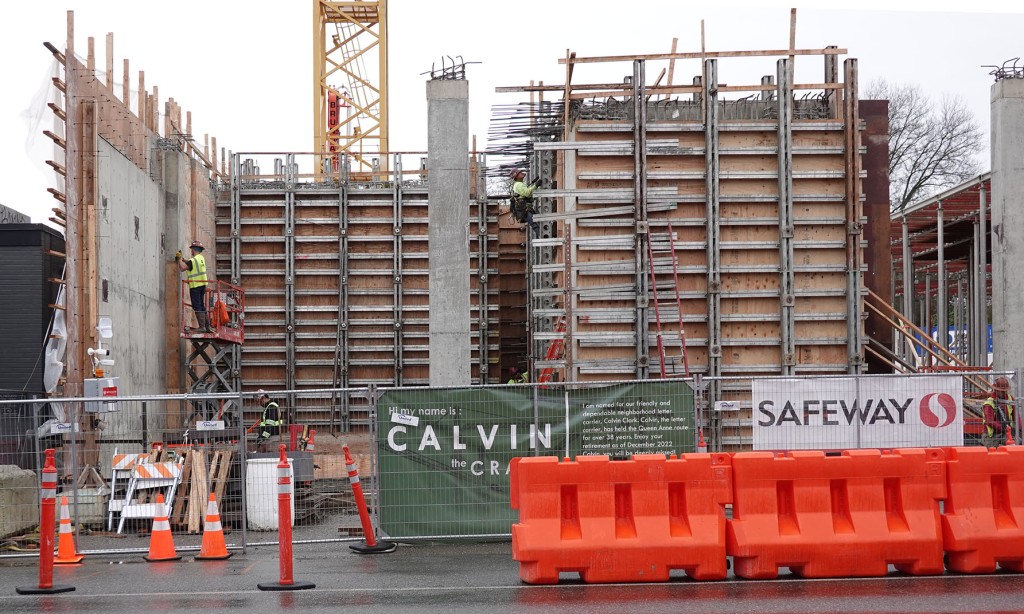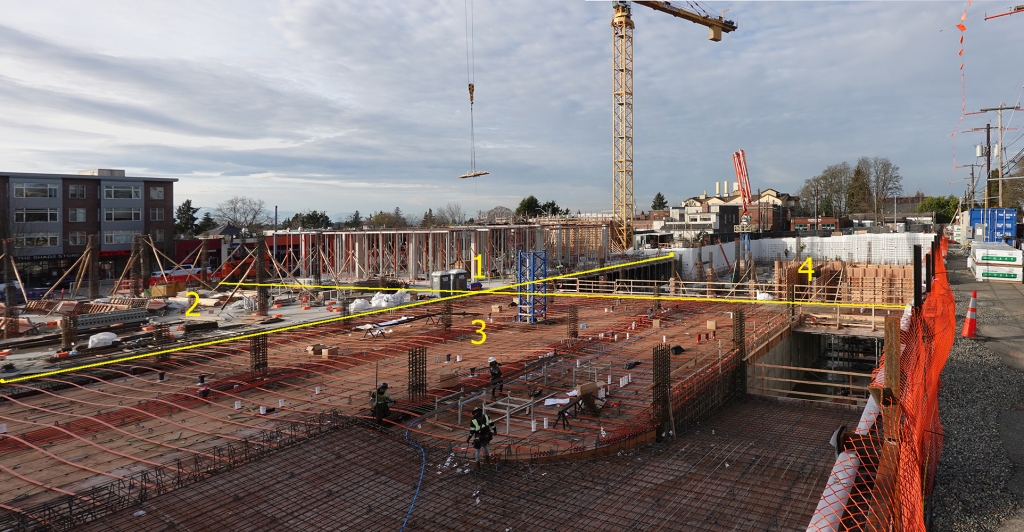In projects like 21 Boston, where the building covers the entire site, contractors face the challenges of how to receive, store and prepare materials, prior to installing them in their final locations.

Thousands of individual elements, such as reinforcing, shoring components, column forms and pieces of equipment, have to be readily available but at the same time not in the way of the actual work.
The solution for Compass Construction has been to operate the site in five separate but related zones, using each of the zones in different ways at different times. In the photo above for example, zone 5 is being used as a workshop in which materials are being stored and prepared for installation in the other zones. At the same time, there is some actual work happening there as well, especially along the back wall. Lots to keep track of.
Here’s a sequence of photos that shows how this worked at one point in Section 3. In the first photo, the post-tensioning cables (with orange sleeves) and reinforcing were installed.

Then the slab was poured, including the ramp for the garage in the foreground.
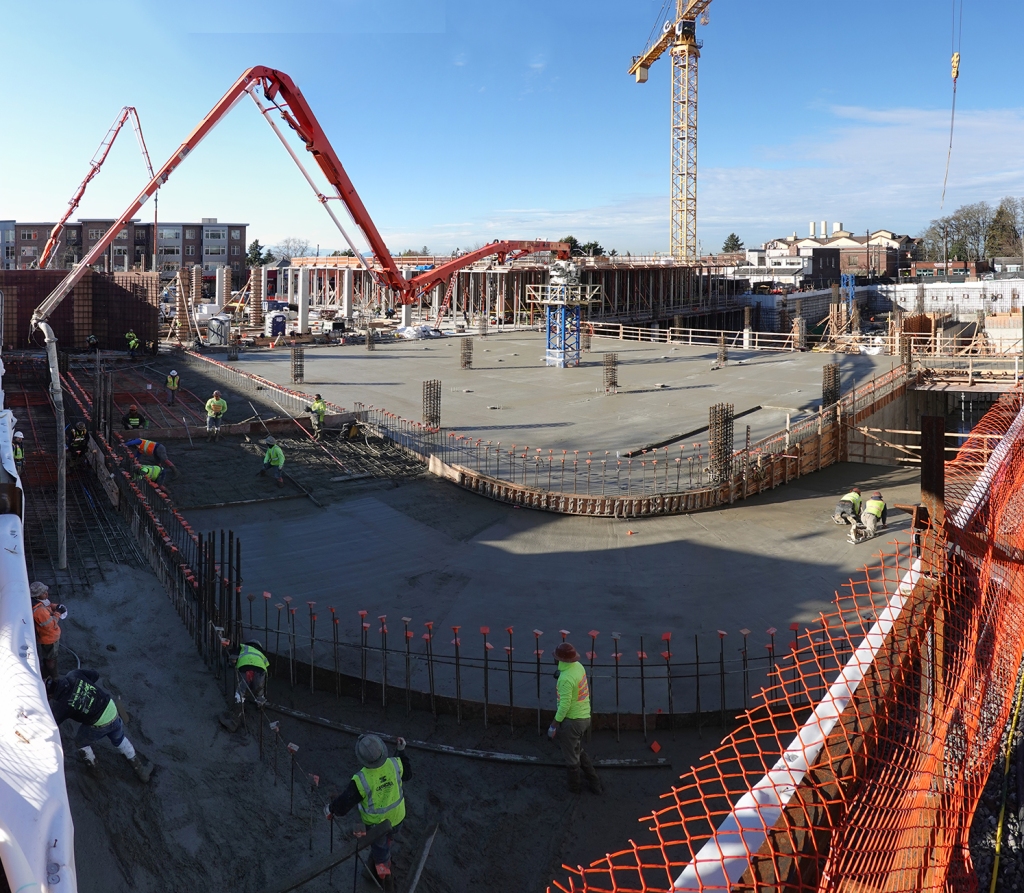
Once the concrete had set, the area was almost immediately turned into a workshop, with reinforcing bar stored on the ramp in the foreground,

and pre-assembled column forms and other materials stored on the deck.
The column forms are an interesting hybrid between precast columns and built-and-formed-in-place column construction. They arrive as two 90-degree sections, hinged at one corner and open at the opposite.

The assembly is lifted into place by the tower crane and lowered around the column reinforcing cage. With some adjusting and some persuasion, the form is closed and squared up by the workman on the lift, while the workman on the deck sets the diagonal bracing that assures the form is held in a plumb and square alignment.

One other work zone sits just adjacent to the project, taking up the parking strip along the east side of Queen Anne Avenue. This is where deliveries of materials and removal of waste takes place. Here, some post-tensioning cables are lifted from the truck by the tower crane.

At other times this zone is set aside for the delivery of concrete.
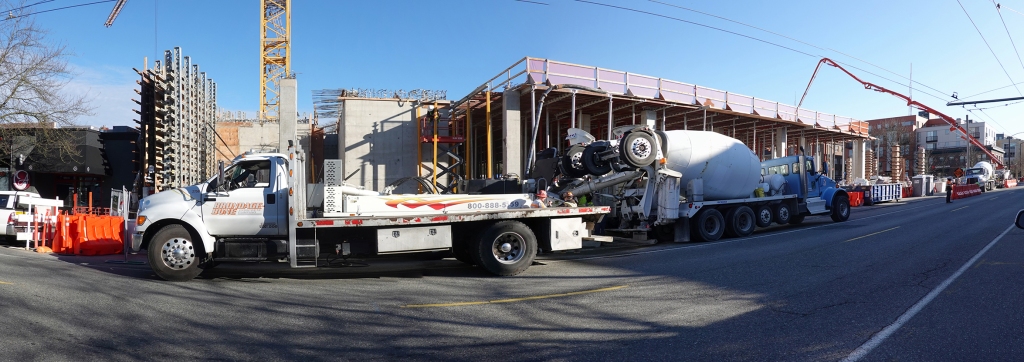
This is adjacent to Sections 1 and 2 which are the farthest along of the 5 Sections. In dramatic fashion, the shoring for the roof of the Safeway store, which is also the base for all of the housing, has gone up quickly.
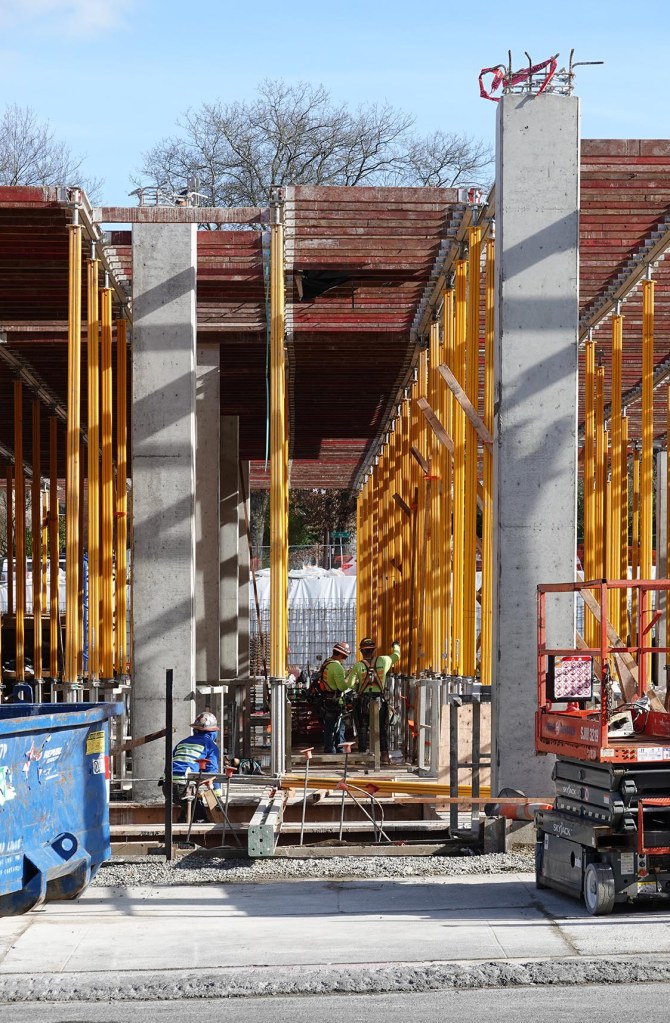
At the same time, in the spirit of sharing space, some formwork panels, now removed from around the concrete core walls, have been stacked in an open slot.

Above them all, the next amazing level is already taking place, first the deck.

And then, the infrastructure that ends up buried in the slab.

We’ve seen some of this before, as the various slab segments have been built up from below; but there’s are big differences here. The most obvious is that the slab will be a lot thicker. This slab will need to transfer the loads of all the housing levels above down to the concrete columns below that will carry those loads into the ground. Secondly, because the housing structure is prefabricated in wood components, those elements need to be literally tied down to this big slab.

The vertical bars with the yellow cap tops and the others with the green ID markers sticking up will be used to attach rods and cables that will go up through the floors of housing to both hold down and strengthen those units. And at the same time, the white cylinders will create holes through the slab that will allow utilities go up and down to and from the housing.

In some places there’ll barely be room to squeeze the concrete between everything; but luckily it’s fluid and will be very highly vibrated into place.
It won’t be long before the concrete in this area tops out the Safeway part of the project, establishing the top of the new store and the “platform” on which the all housing will be built.






